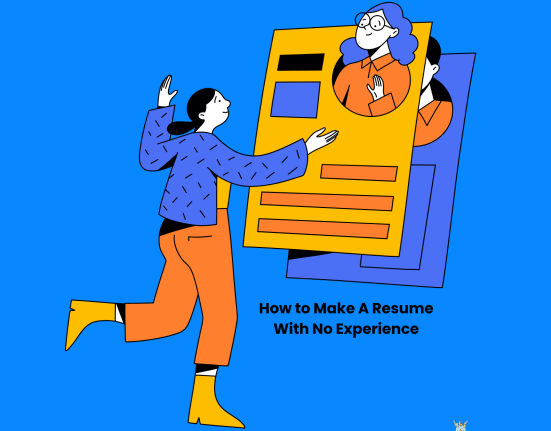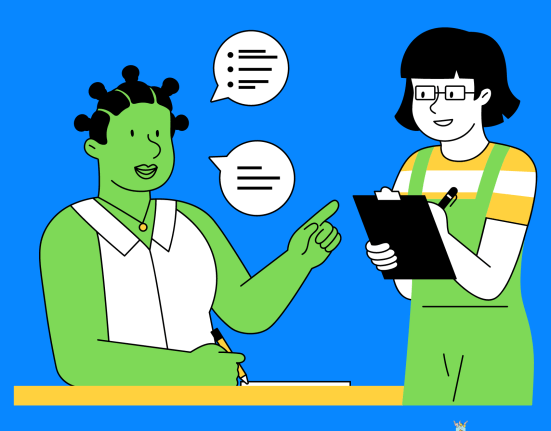We are in the last quarter of 2023, and we know how the whole year was dominated by artificial intelligence (AI). According to Techjury, 35% of the companies have started using AI in 2023. And the other 42% of the tech companies are exploring AI for its implementation in the future. One of the most crucial topics for our generation is the role of artificial intelligence in education. The role of AI in education is constantly evolving at an unprecedented pace. Unfortunately, the education system has stayed the same for more than a hundred years, and it’s time that we talk about how AI is going to change that.
Let’s get started without further ado.
Traditional Education vs. Artificial Intelligence in Education
Traditional teaching methods consist of a teacher, a classroom, and a blackboard, right? It has almost been the same since the 18th century, except a few projectors which we rarely use. This education system comes with several drawbacks, including mass lectures, time boundaries, high investment, high maintenance costs, physical presence, etc.
But the emergence of Artificial Intelligence in education is going to solve most of these old-school issues. AI brings a personalized learning approach, such as 24/7 tutoring support by chatbots and the integration of augmented and virtual reality into teaching methods.
Do you know what this means? I’ll explain: The biggest downside of the current education system is that it can’t focus on each student individually. But the role of AI in education makes this possible! AI can personalize the curriculum and teaching method for each student.
And this is not about the future; there are various AI applications, like Duolingo, that are already doing what we imagine.
5 Uses of AI in Education
1. Translation and Language Learning:

This is one of the most direct roles of AI in education.
AI-based language learning tools can enable students to learn and practice new languages more easily and efficiently. Gone are the days when you had to use dictionaries, take multiple lessons, and study hundreds of resources to learn languages like Japanese and French. Be smart; use AI.
In fact, you don’t even need to learn multiple languages. AI tools can instantly translate text, making it easier for students or anyone to understand foreign language content. For example, you can use your smartphone to translate a sentence from English to Spanish.
Additionally, these tools often provide pronunciation guides and vocabulary quizzes to help students improve their language skills.
Fun Fact: Remember the example of Duolingo I mentioned in the last section? Well, it wasn’t using AI before. After the launch of ChatGPT, the evaluation of Duolingo fell down by 8.58%. But not to worry, it incorporates AI in its language education process and is better than ever!
2. Artificial Intelligence in Education Writing:
Now this is the most popularly used application of AI in education, business, or any other aspect of this real-AI-led-world. But let’s talk about students and education only –
AI in writing assists students in a number of ways. Tools like ChatGPT have fastened the work and education process by automatically checking and correcting grammar and spelling mistakes, writing essays, producing content, etc. It even suggests improvements in sentence structure and word choice.
For example, when using word processing software, students can activate AI-powered grammar and spell check features to receive real-time suggestions and corrections as they type. If I were a student, I would win all the essay competitions!
3. Early Childhood Education:
This is something unique and not very popular yet.
AI-driven early childhood education tools include interactive apps or games designed for young children. These apps offer age-appropriate content and can adapt to a child’s learning level. For example, a mathematics app that adjusts the difficulty of math problems based on a child’s performance gradually increases the challenge as the child progresses.
Or an AI-led application that teaches alphabets, numbers, etc., to a 3-5 year old and adapts to its learning pace. Although I personally haven’t encountered such applications, this isn’t some wild imagination.
4. AI in Teaching:
Now, this one is and will be a big deal for the role of AI in education!
AI can support teachers by providing insights into student performance. It can analyze data to identify struggling students, allowing educators to provide targeted assistance (if they will). AI can also help teachers create and organize educational materials and automate administrative tasks.
For example, it can generate personalized homework assignments, organize schedules, and prepare reports, saving teachers a lot of time and effort.
Although this sounds great, AI mustn’t replace teachers and in-campus schooling. AI may give formal education to students, but for them to have values and social skills, traditional schooling is needed.

5. AI in Tutoring:
AI-powered tutoring is similar to an AI teaching system. These can assess a student’s knowledge and adapt lessons accordingly. If a student struggles with a particular concept, the AI system provides extra practice and explanations.
This is similar to a human tutor, but it’s available 24/7 and can be accessed from a computer or mobile device. School teachers can also work with students to develop an AI tutoring system tailored according to each student’s needs.
These practical explanations demonstrate how AI can be implemented in education to provide concrete benefits, from language learning and writing assistance to early childhood education and support for both educators and students.
Is AI really the Future of Education?
This is not something we can be entirely sure of. However, we know that the current education system needs reforms, and AI might do the trick. We have already discussed the points above (indirectly), but there’s no harm in repeating them.
Here are a few pointers of why I think positive about the role of AI in education –
- Tailored Learning Experiences: AI can create highly personalized learning journeys. It tailors educational content to suit the unique needs of each student. This allows them to progress at their own pace and focus on areas where they require more attention. This level of customization can significantly enhance the quality of learning.
- Efficiency Boost: AI has the potential to automate routine administrative tasks like grading and data management. This reduces the workload of teachers and makes them more efficient at teaching.
- Better Decision-Making: AI equips educators with invaluable insights into student performance and engagement, by identifying students at risk of falling behind and by adjusting teaching methods accordingly. AI promotes data-driven decision-making, ultimately resulting in more effective teaching practices.
- Better Accessibility: AI can make education more accessible to a wider audience. It aids in creating inclusive learning environments, adapting content for students with various learning needs, and extending learning opportunities to remote or underserved communities.
- Continuous Progress: AI-powered systems adapt and improve over time as they accumulate more data and learn from interactions. AI ops are self-learners, and this applies in every segment!
- Cost-Effective Solutions: AI can provide cost-effective educational solutions, especially in cases where there’s a shortage of teachers/professors. It serves as a bridge to offer quality education at scale.
- Lifelong Learning: With AI, learning doesn’t end with formal education. AI-powered platforms support lifelong learning and continuous skill development. Doesn’t matter if it’s a child or an adult who wants to stay competitive in the job market.
Obviously, there are always two sides to a coin, and AI has too. Integration of AI in education can come with ethical concerns, including issues of data privacy, potential algorithmic biases, and the risk of overreliance on technology.
Also Read: Role of AR and VR in revolutionizing Education
Conclusion
ChatGPT will mark 1 year after a few months, and it is a reminder for us to acknowledge that AI has left a significant mark in 2023. While this all looks like a trend, trust me, it’s not. The advancements in AI, the role of AI in education, business, content creation, etc., are more like seismic shifts.
As we’ve discussed, traditional education, based on centuries-old methods, comes with limitations like mass lectures, rigid schedules, and high costs. AI, however, introduces personalized learning, 24/7 tutoring, and augmented reality integration. It can do what the traditional system can’t—personalize education for each student.
Sounds all good and fancy, but it won’t be as fast a change as ChatGPT, especially in third-world countries like India. We might or might not see the action of AI in education, but we sure can hope.











Leave feedback about this